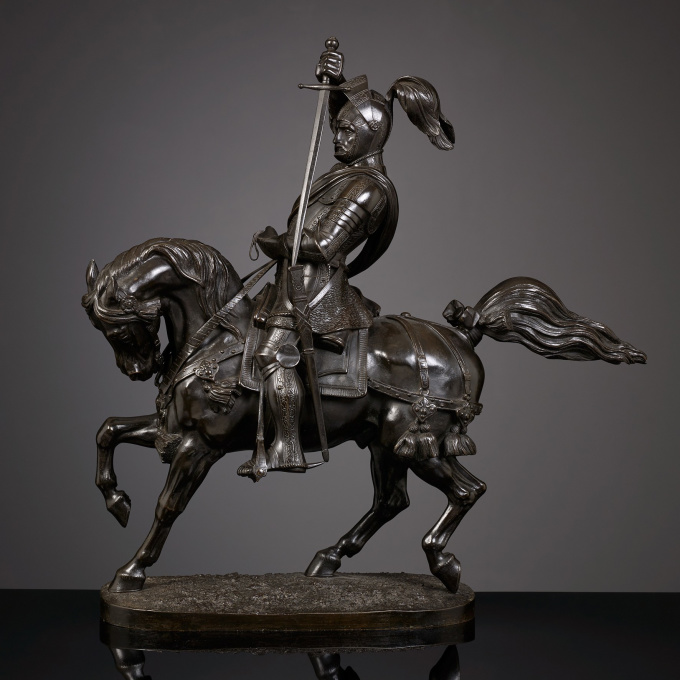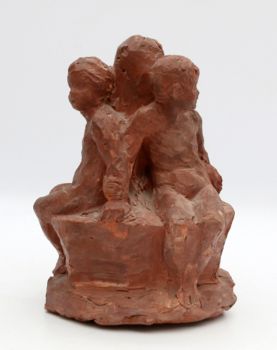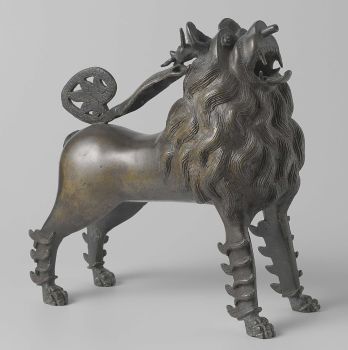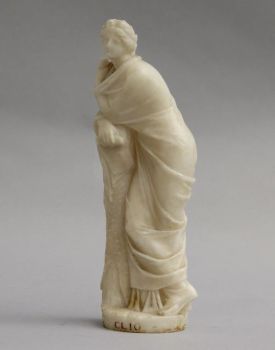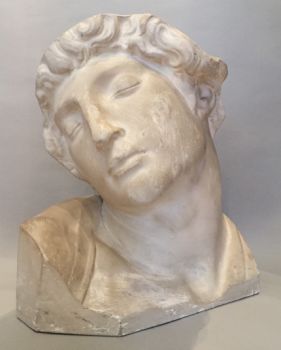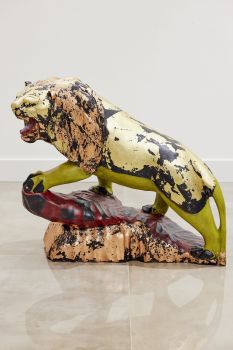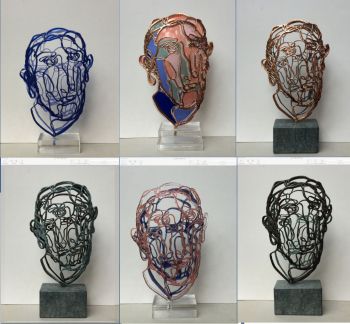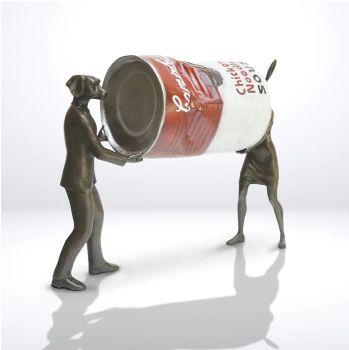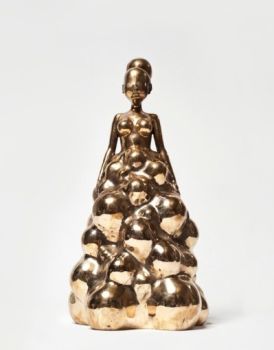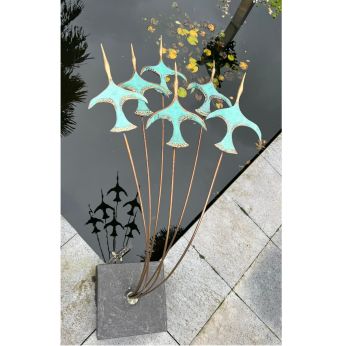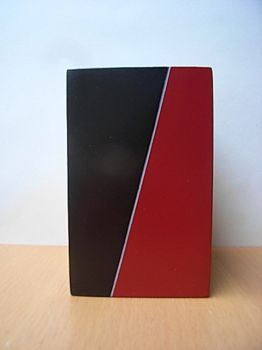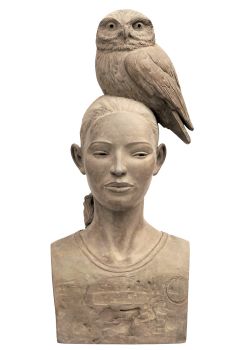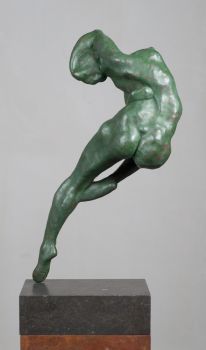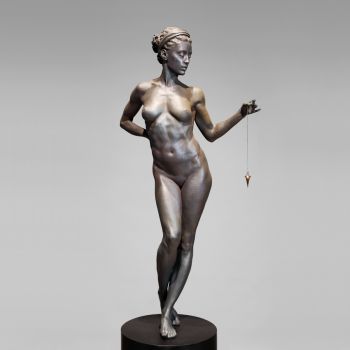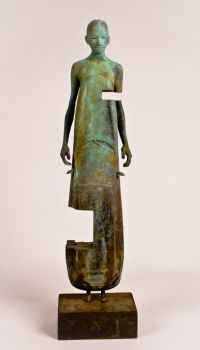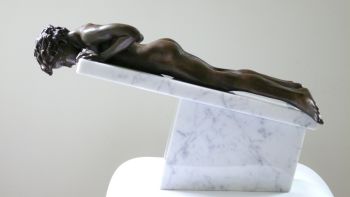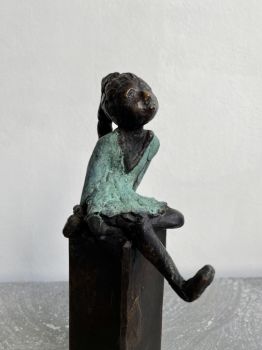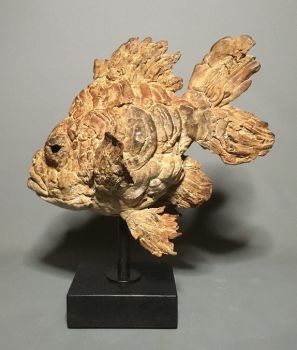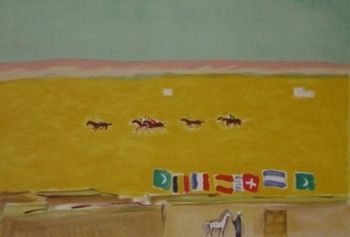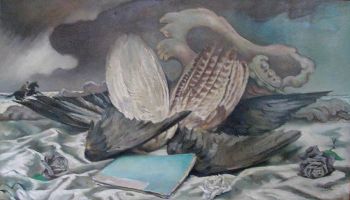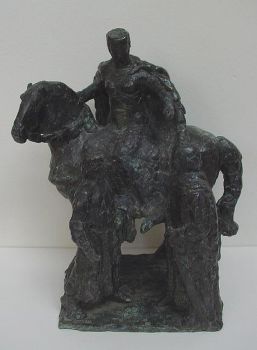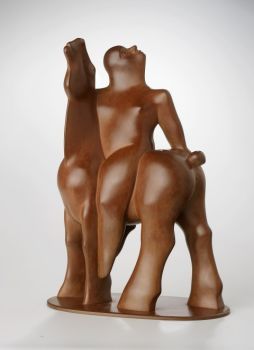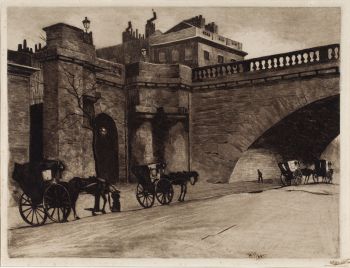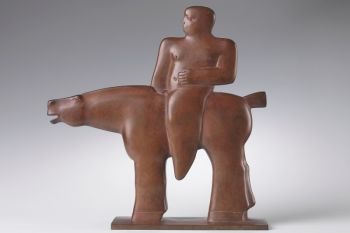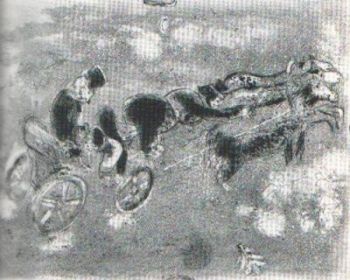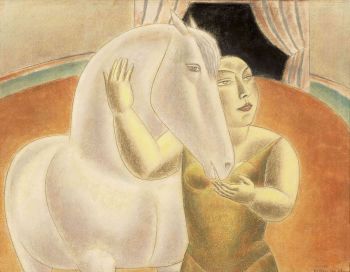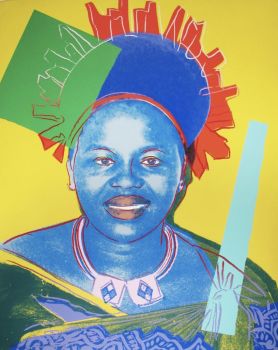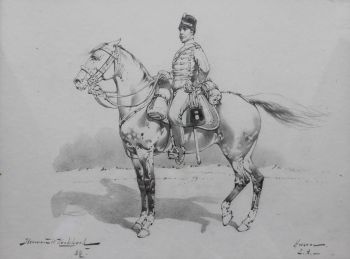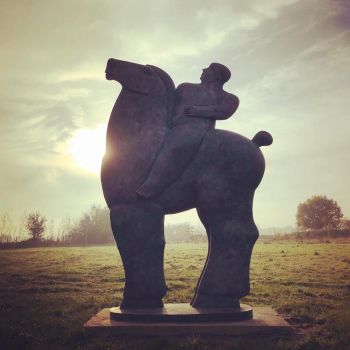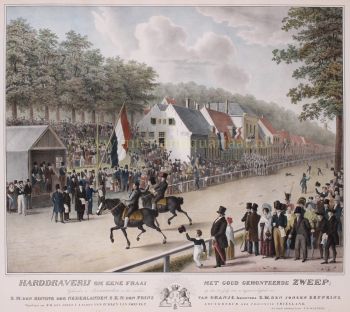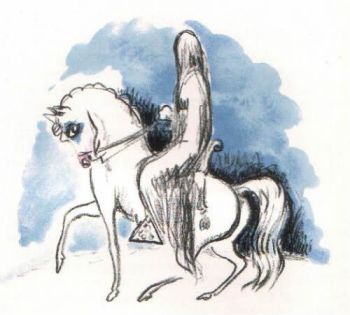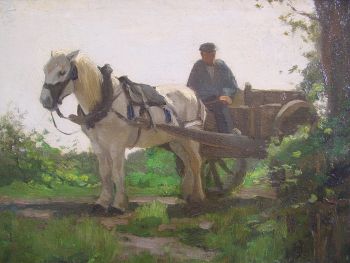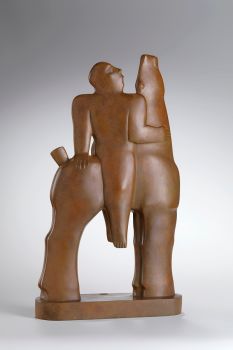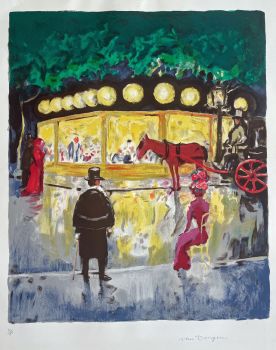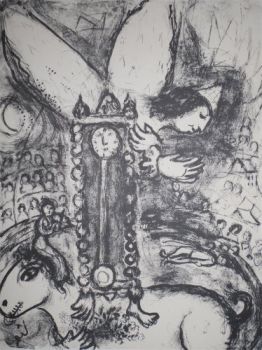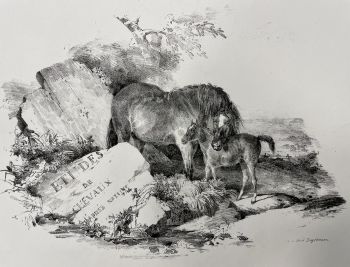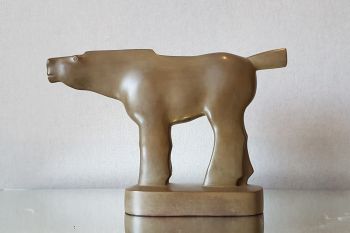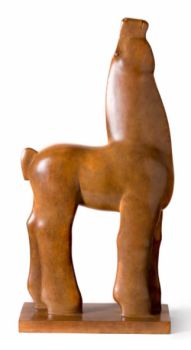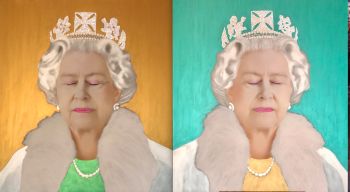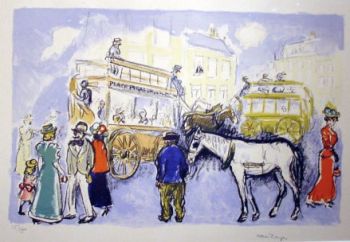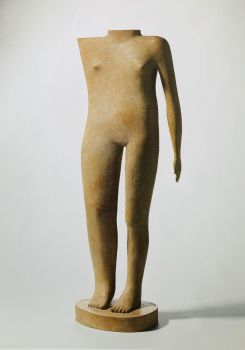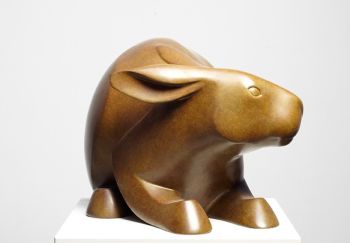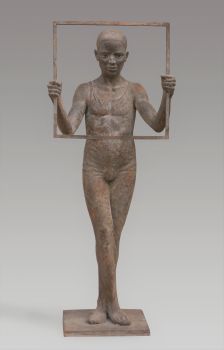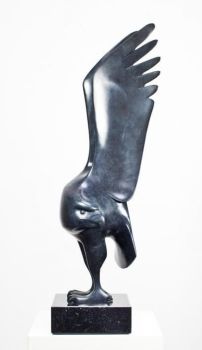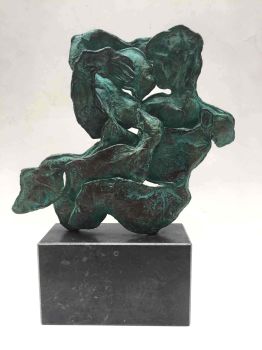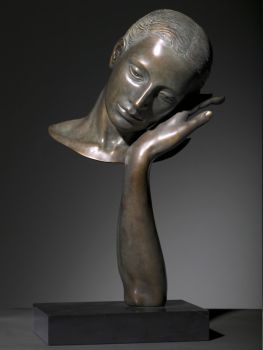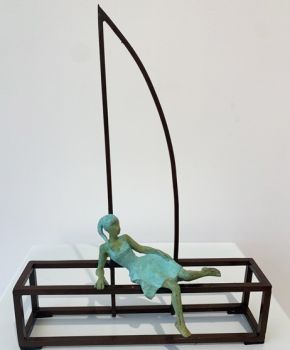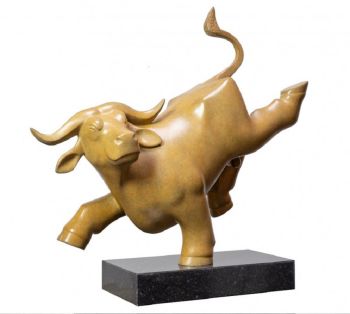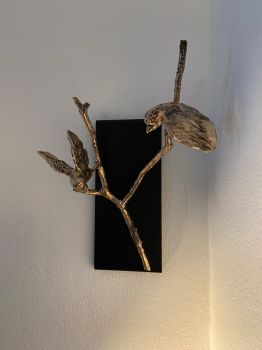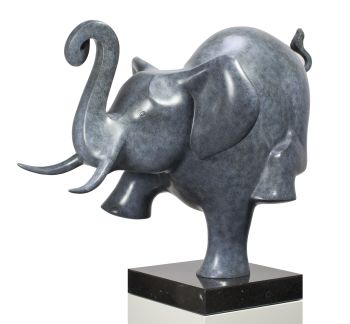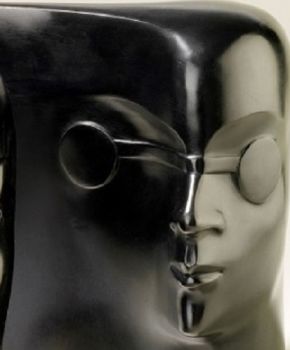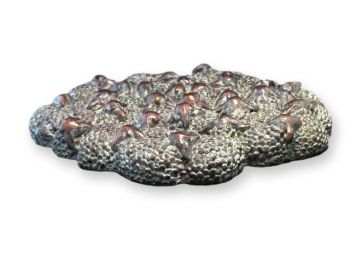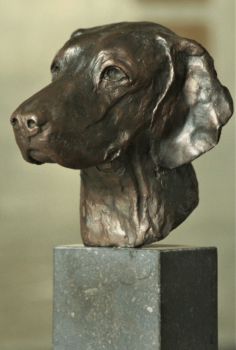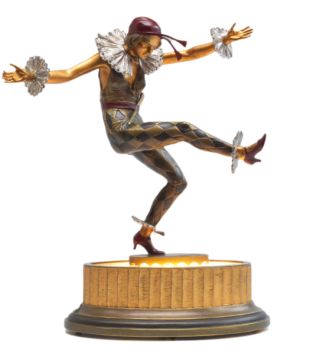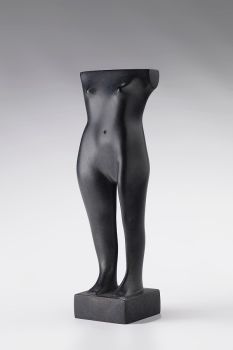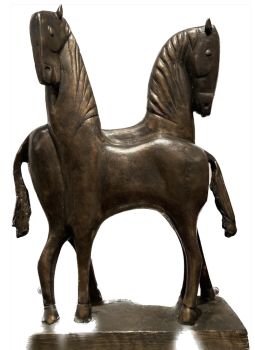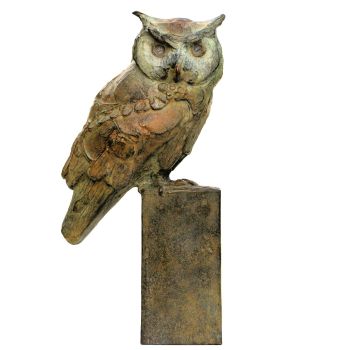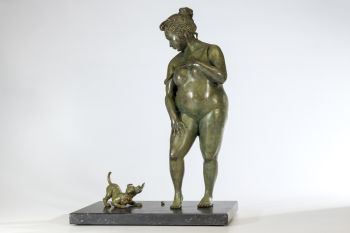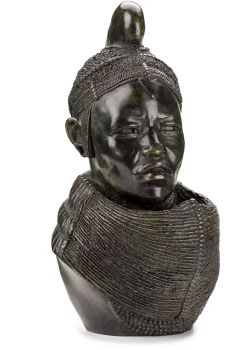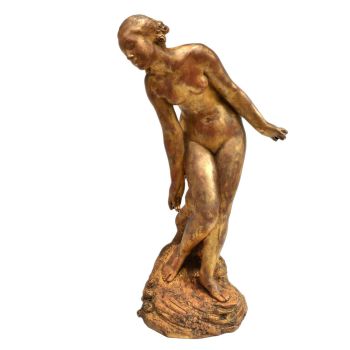Vintage platina ring met grote parel en roosgeslepen diamanten 1836 - 1840
Carlo Marochetti
BronsMetaal
56 ⨯ 55 ⨯ 26 cm
Momenteel niet beschikbaar via Gallerease
- Over kunstwerkEmanuel PhilibertEmanuel Philibert hertog van Savoye, genaamd Testa di Ferro (Chambéry 1528–1580 Turijn), was het enige kind van Karel III van Savoye en zijn vrouw Beatrix van Portugal dat de kindertijd overleefde. Na de dood van Karel III volgde Emanuel Philibert hem op. In 1536 verloor hij echter zijn land door de Franse bezetting. Emanuel Philibert bleef echter trouw aan het Habsburgse huis. In 1551 leidde hij de verdediging van Barcelona, waarbij hij de Fransen weerstond en zijn bijnaam “IJzerkop” kreeg. Later in 1551 kreeg Emanuel Philibert de titel van hertog van Savoye, hoewel hij geen hertogdom had. Emanuel Philibert was van 1555 tot 1559 landvoogd van de Habsburgse Nederlanden, in dienst van zijn neef Filips II. Hij was een tijdgenoot van Willem van Oranje.Carlo Marochetti (1805-1867)Baron Carlo (Charles) Marochetti werd geboren in Turijn in 1805, maar groeide op in Parijs als Frans staatsburger. Na het lycée Napoleon volgde Marochetti een opleiding aan de École des Beaux Arts. Ook verblijft hij een periode in Rome. Zijn eerste leermeesters waren François Joseph Bosio en Antoine-Jean Gros. Vanaf 1829 begint Marochetti meer en meer bekendheid te krijgen. Bekende monumenten van Marochetti staan in Engeland (o.a. Richard Leeuwenhart, bij Westminster), Frankrijk (Théophile Corret de la Tour d’Auvergne in Carhaix) en Italië (Emanuel Philibert op het Piazza san Carlo in Turijn). De opdracht voor het ruiterstandbeeld van Emanuel Philibert werd gegeven door koning Karel Albert van Savoye, als eerbetoon aan zijn voorvader en om de militaire voortvarendheid van zijn dynastie te gedenken. Marochetti vervaardigde het beeld in Parijs in 1838. Het was zijn eerste grote werk en ook zijn eerste ruiterstandbeeld. Alvorens het beeld op zijn plaats werd gezet op het San Carlo plein in Turijn werd het tentoongesteld op de binnenplaats van het Louvre. Dit werk betekende ook de doorbraak van Marochetti. Na deze opdracht volgden onder andere nog ruiterstandbeelden van de Hertog van Wellington en Richard Leeuwenhart.De populariteit van het standbeeld van Emanuel Philibert leidde ertoe dat reeds in 1838 gereduceerde modellen zoals het exemplaar hier op de markt kwamen.
- Over kunstenaarCarlo Marochetti was born in Turin but brought up in Paris as a French citizen. His first teachers were François Joseph Bosio and Antoine-Jean Gros in Paris. There his statue of A Young Girl playing with a Dog won a medal in 1829, and his Fallen Angel was exhibited in 1831. Between 1822 and 1830 he studied chiefly in Rome. From 1832 to 1848 he lived in France.
In Paris, he made a panel representing the Battle of Jemappes for the Arc de Triomphe, the altar in the Church of the Madeleine and the tomb of Vincenzo Bellini in Père Lachaise Cemetery. While living in Paris, he also created the equestrian monument of Emmanuel Philibert which stands in a central piazza in Turin.
He followed the French king Louis-Philippe into exile in the United Kingdom after the fall of the July monarchy in 1848.
He spent the greater part of his time from then until his death in London. He lived in Onslow Square, and had a large studio, and his own foundry, nearby in Sydney Mews. Among his chief works were statues of Queen Victoria, Colin Campbell, 1st Baron Clyde (erected 1867 in Waterloo Place), and King Richard the Lionheart. The Richard Coeur de Lion (statue) was displayed in the Great Exhibition, and a bronze copy was made in 1860 to be displayed in front of the Palace of Westminster, where it has remained ever since.
His statue of Robert Stephenson (installed 1871) still stands in the forecourt of Euston Station. He made a bust of William Makepeace Thackeray for Westminster Abbey. He also created the marble recumbent effigies for the tomb of Queen Victoria and Prince Albert in the Royal Mausoleum at Frogmore in Windsor Great Park and the statue on the Duke of Wellington Commemorative Column outside Stratfield Saye House.
From 1864 he collaborated with Sir Edwin Landseer on the four bronze lions to be placed around the base of Nelson's Column in Trafalgar Square, and cast them at his foundry.
As a favourite sculptor of Queen Victoria, he was commissioned to make the seated figure of Prince Albert for the Albert Memorial in Kensington Gardens. However the first version was rejected by the architect of the monument, Sir George Gilbert Scott, and Marochetti died before a satisfactory second version could be completed.
Marochetti was created a baron by the King of Sardinia and was also a chevalier of the Legion of Honour. He was elected an associate of the Royal Academy 1861 and a full academician in 1866.
Artwork details
Categorie
Onderwerp
Materiaal & Techniek
Kleur
Related artworks
- 1 - 4 / 24
Willem Witsen
Wachtende rijtuigen voor de Waterloopbrug1850 - 1900
Prijs op aanvraagKunsthandel Pygmalion
1 - 4 / 24- 1 - 4 / 24

